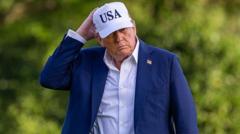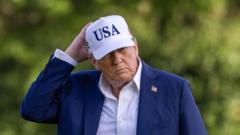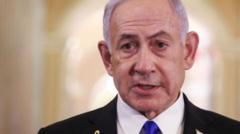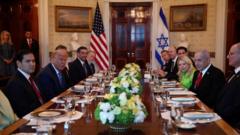As President Trump delays new tariffs originally set for implementation, global trading partners remain resistant to U.S. demands, highlighting the challenges faced by the administration in achieving trade agreements.
Trump Postpones Tariff Implementation as Global Trade Relations Tense

Trump Postpones Tariff Implementation as Global Trade Relations Tense
The White House extends tariff deadline in response to stalled negotiations with major trading partners, indicating deeper issues in U.S. trade policy.
Trump's administration has decided to postpone the deadline for imposing tariffs, originally scheduled for July 9, to August 1, amidst ongoing struggles to secure favorable trade deals. The initial proclamation of "90 deals in 90 days" has seemingly floundered, with indications that fewer than ten agreements are likely to materialize by the new date. Treasury Secretary Scott Bessent has focused attention on 18 countries that account for 95 percent of the U.S. trade deficit, yet no significant tangible progress has been achieved.
The extension signals a lack of confidence in reaching substantial agreements and reflects a diplomatic tactic reminiscent of previous U.S. trade negotiations. Even as the White House attempts to assert its pressure on trade partners, including Japan and South Korea, these nations express discontent with the U.S. approach, suggesting potential retaliatory measures linked to their substantial holdings of U.S. debt.
Despite a calmer market reaction compared to the earlier tumult of this year, analysts are concerned that this impending trade conflict could reignite economic instability. The dollar has depreciated by 10% against various currencies this year, directly impacting consumer prices and the American economy. While the U.S. has seen a temporary influx of tariff revenue into its Treasury, the broader implications reveal that as the U.S. isolates itself with tariffs, other nations are rapidly cultivating bilateral trade agreements among themselves, undermining the U.S. economic stance.
Furthermore, the effective tariff rate imposed by the U.S. on other countries now hovers around 15%, a stark increase from previous rates of 2-4%. Current trade patterns show a notable decline in Chinese exports to the U.S., while their trade with other nations continues to rise. As the global trade landscape shifts, the long-term ramifications of these tariff policies and international responses could usher in a more intricate and unpredictable economic future.





















